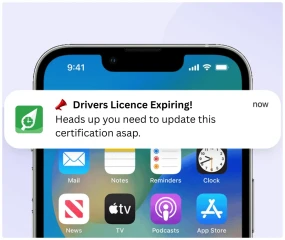How employee turnover impacts business success
Employee turnover is a major issue for businesses. Understanding why employees are leaving and how to manage it effectively can have a profound impact on our company’s success. The reasons for leaving a job are varied, but one common theme stands out: People leave managers, not companies. This suggests that the relationship between an employee and their manager is often the most important factor in job satisfaction and retention. When employees feel unsupported, undervalued, or misunderstood by their supervisors, they are more likely to leave. This can happen even if other aspects of their job or company are satisfactory.
High personnel replacement rates can lead to serious consequences. The costs associated with recruiting, hiring, and training new employees can significantly affect our bottom line. A decline in productivity during transitions can harm the business even more. Recognising the core reasons for leaving work and addressing issues early can help. It allows businesses to maintain a more stable and engaged workforce. This article will explore why turnover matters, how to measure it, and what actions we can take to reduce its impact on our organisation.

Why high employee turnover affects business performance
Employee turnover is a major challenge for businesses of all sizes. High personnel replacement rates disrupt business operations, cost valuable time and resources, and affect overall morale. By understanding the reasons for leaving and their consequences, businesses can take steps to address the issue and foster a more productive and stable workforce.
The financial impact of turnover is both immediate and long term. The direct costs of hiring new employees—including advertising open positions, conducting interviews, and onboarding—add up quickly. The time and resources needed to train new hires to perform their roles and integrate them into the company culture also drain resources. These costs are unavoidable.
However, the most significant financial impact often comes from lost productivity. New employees take time to become fully effective in their roles, and this productivity dip can hinder key projects and slow progress.
Beyond the financial impact, employee turnover also affects team morale and company culture. When employees are leaving, it creates disruption within teams. Those who remain may feel burdened with extra responsibilities. They might also feel demoralised by losing colleagues. This can lead to disengagement and a decline in performance.
Frequent turnover can damage team cohesion and create an unstable work environment. It makes it harder for businesses to reach their long-term goals. Managing staff replacement is essential for cutting costs and maintaining a motivated, focused, and high-performing team.

Top reasons for employee turnover in organisations
Employee turnover is often a sign of deeper issues within the organisation. While some level of turnover is normal, a consistently high rate of departures may signal significant problems that need attention. Identifying these issues is key to creating a positive, productive work environment and improving employee retention.
Common reasons for leaving a job include:
- Poor management: Employees who feel unsupported, micromanaged, or undervalued by their supervisors are more likely to leave. Managers who lack trust, communicate poorly, or fail to provide strong leadership create toxic environments that drive employees away.
- Company culture: If employees feel disconnected from the organisation’s values or are not aligned with its goals, they may lose motivation and seek a more fulfilling environment elsewhere.
- Poor communication: A lack of transparency or poor communication channels leaves employees feeling frustrated and undervalued. Open, honest communication builds trust and strengthens employees’ connection to the organisation’s goals.
Proactive steps to manage employee turnover
Managing and reducing employee turnover requires a proactive approach. By tracking turnover, understanding its causes, and implementing targeted strategies, businesses can create a stable and engaged workforce. The following steps offer actionable ways to manage turnover and improve our organisation.

Measuring employee turnover effectively for retention
Turnover should be treated as a Key Performance Indicator (KPI) for our organisation. By regularly monitoring turnover rates, we gain valuable insights into the health of our workforce. Setting a target turnover rate and tracking it will help us spot increases early. This data allows us to compare turnover across departments, roles, and employee tenures. It gives a clearer view of where problems might exist. With this information, we can act before turnover becomes a bigger issue.
For example, if we notice higher turnover rates in a particular department, it could indicate poor management, excessive workload, or a lack of career progression. Tracking turnover over time enables us to assess our retention strategies and make data-backed decisions to improve employee satisfaction.
Exit interviews: Key to understanding employee turnover
Exit interviews are a powerful tool for understanding why employees are leaving the job. By conducting thorough and open exit interviews, we gather direct feedback on the reasons for leaving a job. Asking about their experiences, challenges, and reasons for leaving helps us understand issues with management, team dynamics, career growth opportunities, and more. Document and analyse this feedback to identify trends or recurring issues that need attention.
Key questions for exit interviews:
- What could the company have done to keep you?
- How would you describe your relationship with your manager?
These questions encourage honest, constructive feedback. This feedback can be used to make positive changes in our company. Acting on the feedback shows employees that their input is valued, which increases the likelihood of improvements being made based on their suggestions.

Identifying turnover trends and taking action
Identifying patterns in employee exits is crucial to addressing turnover. By tracking turnover data, we can spot recurring issues such as ineffective leadership, lack of growth opportunities, or poor work-life balance. Recognising these patterns helps businesses implement targeted solutions to reduce turnover.
For example:
- If exit interviews show several employees are leaving due to a lack of career path development, businesses can invest in professional development programs or offer more opportunities for growth.
- If stress or burnout are frequent reasons for leaving, businesses can introduce policies to improve work-life balance, such as flexible working hours or better mental health support.
By recognising these trends, businesses can make informed decisions to reduce turnover before it becomes widespread.
Improving retention with employee feedback
Acting on employee feedback is one of the most effective ways to reduce turnover and improve engagement. When employees feel their opinions are valued and they see tangible changes based on their feedback, they are more likely to stay. Taking action based on feedback helps build trust and loyalty, which improves retention.
Steps to act on employee feedback:
- Review feedback from exit interviews, surveys, or regular check-ins.
- If employees report dissatisfaction with management, offer leadership training or revise strategies.
- If compensation concerns are common, review pay structures or offer performance-based incentives.

Providing career growth opportunities to retain staff
One key area where feedback can lead to improvements is career development. If employees express frustration about a lack of career progression, businesses should consider creating clearer career paths. Offering mentorship, skill-building workshops, and leadership training can show employees that the company is invested in their success.
Providing clear paths for promotion and growth opportunities can help employees feel engaged and motivated, reducing the likelihood of them leaving for better opportunities elsewhere.
Work-life balance reduces employee turnover
Work-life balance is crucial for employee retention. Offering flexible work arrangements, remote work options, or even personal leave can significantly enhance job satisfaction and reduce turnover. Employees who feel they can balance their personal and professional lives are more likely to stay with a company.
Providing a supportive environment where employees are encouraged to care for their well-being fosters loyalty and engagement.
Ways to improve work-life balance:
- Offering flexible schedules
- Providing additional time off for family members or personal leave
- Introducing remote work options to create more flexible working hours

Employee retention requires continuous effort
Employee turnover management is not a one-time task. It requires continuous monitoring, assessment, and adjustment. By consistently measuring turnover, conducting exit interviews, identifying trends, and acting on feedback, businesses can build a more engaged and stable workforce. Success depends on recognising that turnover is an ongoing issue that requires proactive management.
Key actions to maintain retention:
- Regularly measure turnover and assess employee satisfaction.
- Continuously gather feedback from employees.
- Actively implement changes to improve job satisfaction.
Understanding the reasons for leaving a job and addressing them effectively, while creating an environment where employees feel valued, is key to long-term business success. By prioritising employee satisfaction and investing in retention strategies, businesses can reduce turnover rates, increase productivity, and foster a motivated, high-performing workforce.
Take a proactive approach to employee turnover. Address its root causes, implement positive changes, and cultivate a loyal workforce that contributes to our company’s ongoing success.



